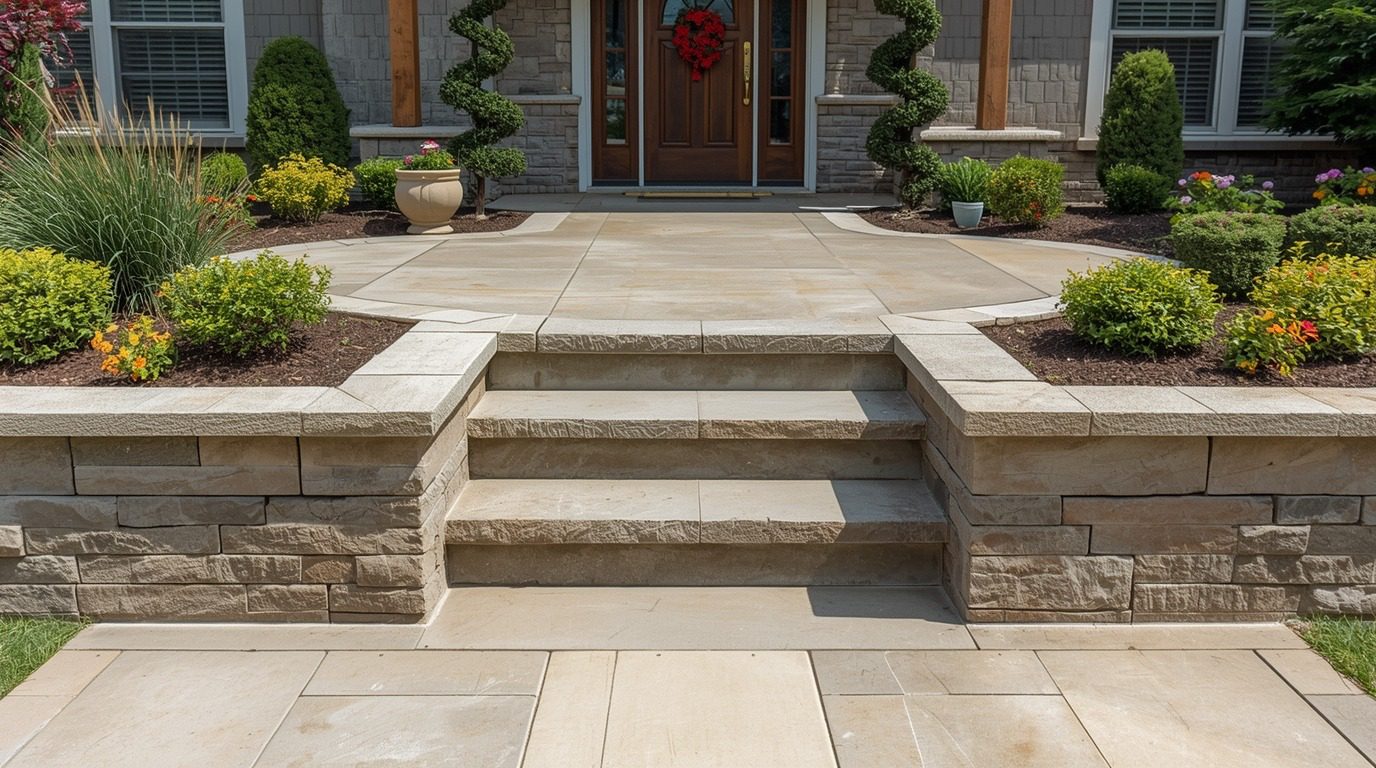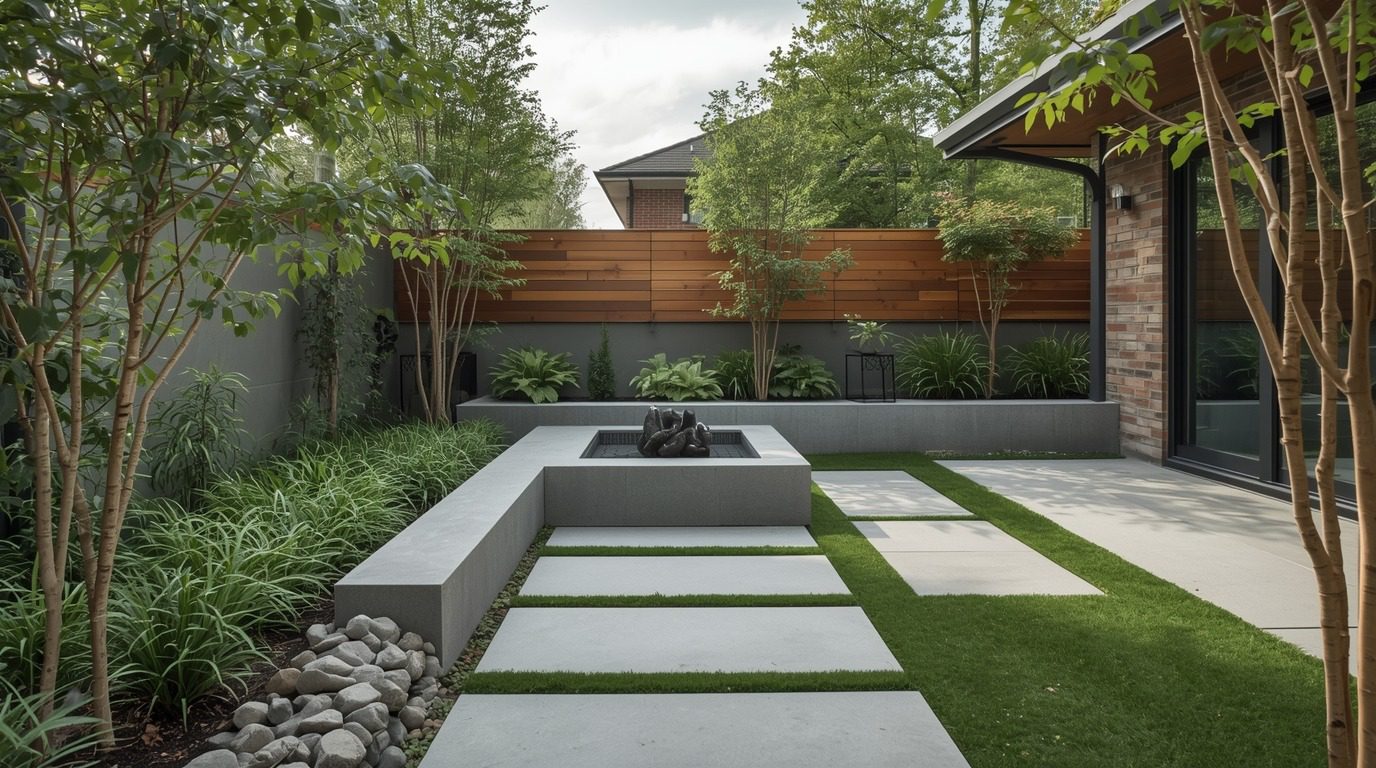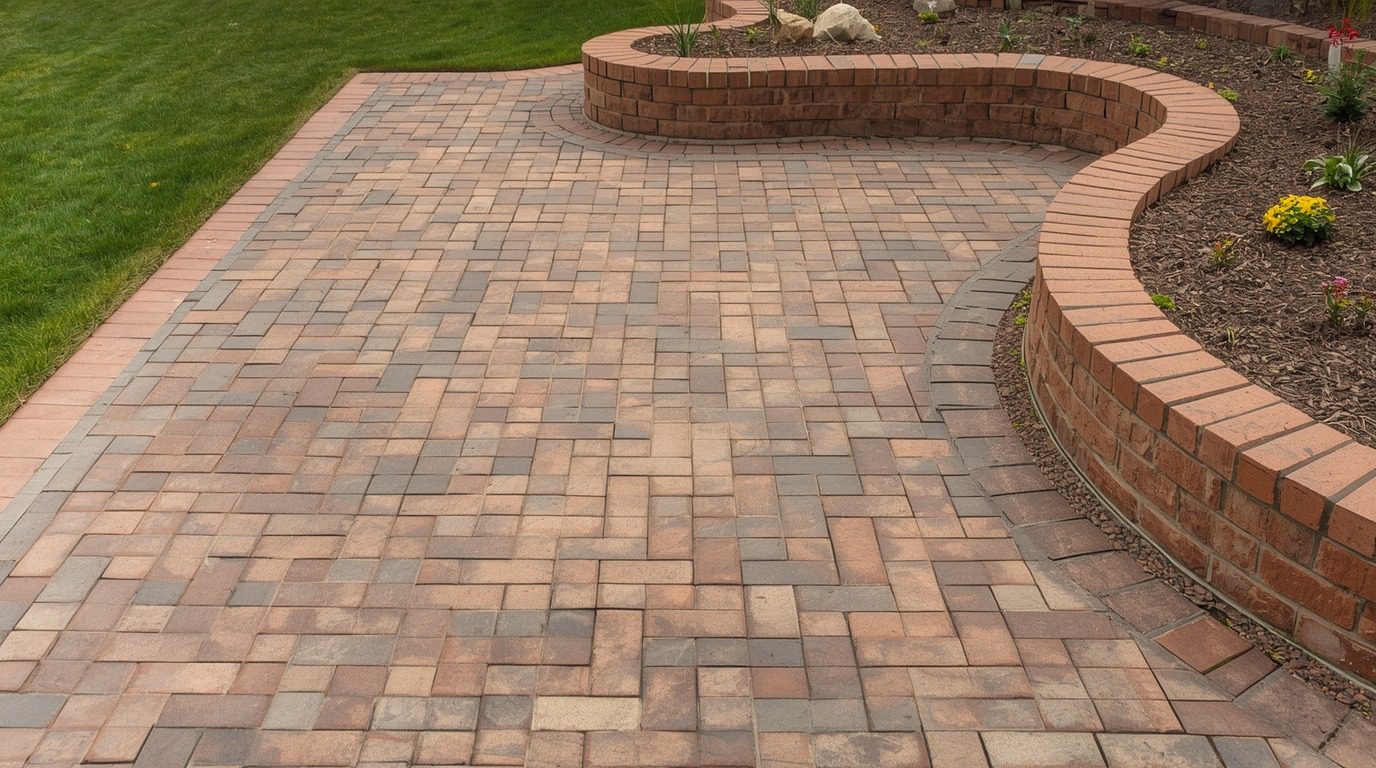Every modern home deserves an outstanding landscape that showcases personal style and design tastes. While you may have an idea of the type of landscape you want for your outdoors, choosing the right hardscape materials can be a challenging process. The right materials can enhance both the functionality and beauty of your landscape, making your home feel like a complete modern space.
Different hardscaping materials can achieve various aesthetic and functional outcomes in your outdoor space, depending on the design of your home and the region in which it’s located. Below, we’ll look at the top four hardscape materials you should consider to create an outstanding landscape design.

Concrete
Concrete is one of the most popular hardscaping materials, prized for its versatility and affordability. The hardscaping structure you’ve imagined to erect or install in your outdoors, there’s a higher chance that concrete can be used in its construction. The possibilities are endless; you only need to do a bit of research, and you can even create some of these structures on your own.

Concrete’s versatility makes it so easy to customize your hardscape design ideas, so you don’t have to worry about your outdoor elements looking the same as your neighbor’s. You can then paint or stain your concrete structures to achieve just about any imaginable hue. It’s also easier to install concrete as it takes shape and dries faster than most other materials. It also takes less time to prepare the ground for concrete compared to other options, such as laying pavers.
On the other hand, however, concrete can pose a risk to safety, especially when it’s wet. Wet concrete can become slippery and dangerous to everyone walking in your yard. They can also easily split and crack if the ground beneath starts to thaw and freeze. Once concrete starts to crack, you may have to replace the entire section, as concrete cracks are hard to repair.
Natural Stone

When it’s time to introduce a sleek, sustainable touch to your modern urban garden, natural stone is your best option for the project. With careful arrangement and planning, natural stone can enhance the design aesthetics of your landscape while providing eco-friendly benefits. Natural stones only work well for landscape designs that incorporate gardens and vegetative covers around the yard.
Natural stone options like limestone stand out as durable options for gardens with a minimal environmental footprint. Limestone can help you achieve a balanced groundwater level, ensuring your vegetation isn’t drastically affected during drought. To minimize environmental impact when using natural stone, you may consider sourcing locally available stones for your project.
While not as versatile as concrete, natural stone can fit in a majority of landscaping designs, like this outstanding Toronto landscaping design. Once fitted, ensure you maintain your stone effectively for longevity. You can periodically remove organic matter, like debris and leaves, which can trap moisture and promote the habitation of unwanted pests.
Brick

Brick fits perfectly well in any hardscape design, especially as a floor for a relaxation area, creating a clear cut between your grass and the specific relaxation spaces. They come in many tones, shapes, and colors to give you a wide variety of options to choose from, depending on your design needs. Bricks are also a fairly low-maintenance option, just like concrete, and are quite sturdy, ensuring long-lasting performance.
You can use bricks in a number of hardscaping projects, such as building retaining walls, pathways, fireplaces, and other types of structures. Depending on whether you want your surfaces to appear formal or informal, you can choose a relevant brick pattern that satisfies those specific needs. You can also opt for used bricks to save costs and promote environmental sustainability, provided they align with your design plans.
Permeable Pavers

Since pavers are already known to add a touch of class, many homeowners choose them for that reason only. However, beyond boosting your curb appeal when meticulously arranged, permeable pavers also allow water to filter through to achieve a well-drained yard. If you’re concerned about sustainability, permeable pavers are an excellent hardscape material to consider as they allow water to flow through your garden and reduce runoff.
Permeable pavers also allow heat to penetrate through the soil, eliminating instances of urban heat island effects and improving the health of your soil. This means you can conduct healthy agricultural activities like growing plants and keeping garden animals like rabbits and ducks.
However, installing permeable pavers can be a bit more demanding than other options like concrete or loose gravel. You will need to prepare the site by ensuring the ground is level and well-compacted. Afterwards, the pavers have to go into the prepared space individually, which means you have to arrange each piece into its space one by one. The installation cost can quickly escalate per square meter, so it’s best to limit pavers to small areas in your yard.
Choosing the right hardscape material is your first step towards building a durable, functional, and appealing landscape. By using the above materials in your yard, you can trust that it will stand out and perform well in different seasons throughout the year.

